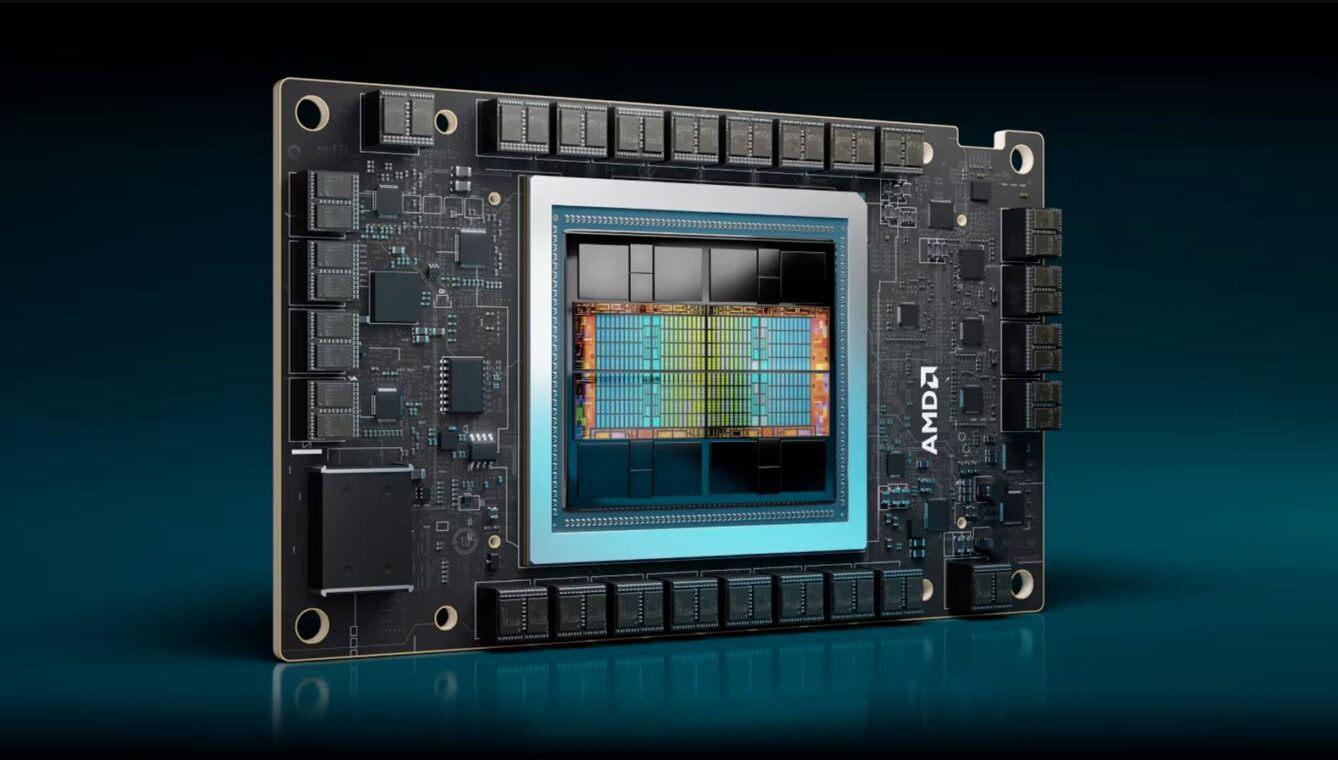NVIDIA‘s iron grip on the AI chip market is finally facing a credible challenger. Under CEO Lisa Su’s strategic leadership, AMD is executing a massive production ramp of its Instinct MI300X accelerators, with plans to ship half a million units in 2024 alone. This aggressive push positions AMD to seize approximately 7% of the critical AI accelerator market from NVIDIA’s dominant 90% share, according to industry analysts from IDC and TechInsights.
What Makes AMD’s MI300X a Threat to NVIDIA’s AI Dominance?
The MI300X isn’t just another chip—it’s a calculated strike at NVIDIA’s technical stronghold. With twice the memory capacity (192GB vs 96GB) and comparable bandwidth to NVIDIA’s flagship H100, AMD’s CDNA 3 architecture delivers staggering inferencing performance gains. Internal benchmarks reviewed by AnandTech show the MI300X outperforming NVIDIA’s H100 by 20-60% in large language model operations. Yet raw specs alone don’t tell the full story. AMD’s real challenge lies in dismantling NVIDIA’s ecosystem moat—CUDA’s entrenched developer network and framework integrations that have made switching costs prohibitively high for many enterprises.
Key advantages driving MI300X adoption:
- 30% lower cost-per-inference than H100 equivalents
- Open ROCm software platform avoiding vendor lock-in
- Available supply during NVIDIA’s ongoing shortages
How is AMD Overcoming NVIDIA’s Ecosystem Lock-in?
Breaking CUDA’s stranglehold required radical partnerships. AMD’s collaboration with Microsoft to integrate ROCm across Azure’s AI infrastructure proved pivotal, giving enterprises a frictionless migration path. “We’re enabling true multi-vendor flexibility,” Microsoft Azure CTO Mark Russinovich stated at the 2023 Advancing AI Summit. Similarly, AMD’s work with PyTorch and TensorFlow teams ensures framework-level compatibility that eliminates retraining costs. Crucially, AMD is targeting inferencing workloads where software dependencies are less entrenched than in training—a strategic wedge into NVIDIA’s fortress.
Big Tech’s Pivot: Microsoft, OpenAI, Meta Embrace AMD
The MI300X’s breakthrough came when OpenAI quietly deployed clusters for internal inferencing last quarter, followed by Microsoft’s announcement of MI300X-powered Azure ND MI300x v5 VMs. Meta soon joined, confirming deployment for AI content moderation systems. “Diversification is existential,” noted Oppenheimer analyst Rick Schafer. “Every hyperscaler needs an NVIDIA alternative.” AMD’s projected 500,000 shipments—primarily to these three clients—represent a $3-4 billion revenue stream according to SEC filings, directly eroding NVIDIA’s enterprise stronghold.
The Roadmap Beyond MI300X: Helios Racks and MI400
At June’s Advancing AI event, Su revealed an audacious roadmap targeting NVIDIA’s upcoming Rubin architecture. The MI400 series—slated for 2025—will debut HBM4 memory with 50% density increases. More significantly, AMD’s Helios rack-scale solutions integrate next-gen EPYC Venice CPUs to challenge NVIDIA’s NVL144 designs. “This isn’t just chip-to-chip combat,” observed TechPowerUp editor Gavin Bonshor. “AMD is competing at the infrastructure level where NVIDIA earns its margins.”
AMD’s projected trajectory:
- 2024: 7% AI accelerator market share (Counterpoint Research)
- 2025: 15% share with MI325X ramp (Gartner)
- 2026: Full data center stack integration
With AMD’s Q2 earnings report imminent, all eyes are on MI300X adoption metrics. While NVIDIA’s ecosystem remains formidable, AMD’s hardware breakthroughs and big-tech alliances have ignited the first real AI chip war. Watch for AMD’s earnings call this week—it may reveal whether 2024 marks the tipping point in the battle for AI infrastructure supremacy.
Must Know
What is AMD’s Instinct MI300X?
AMD’s flagship AI accelerator featuring 192GB HBM3 memory and CDNA 3 architecture. Optimized for large language model inferencing, it directly challenges NVIDIA’s H100 with higher memory bandwidth (5.2TB/s) and open ROCm software support.
How does MI300X performance compare to NVIDIA H100?
Independent benchmarks show 20-60% faster inferencing on 70B+ parameter models. However, NVIDIA retains advantages in training workloads and CUDA-optimized applications. AMD leads in memory-intensive tasks due to its 192GB capacity versus H100’s 96GB.
Which companies are adopting AMD’s AI chips?
Microsoft (Azure instances), OpenAI (internal inferencing), and Meta (content systems) are primary adopters. Dell and Lenovo will ship MI300X servers in Q3, while Oracle Cloud announced limited availability.
What is AMD’s projected AI market share?
Analysts project 7% by 2025’s end, rising to 10-15% by 2026. This represents a seismic shift from NVIDIA’s current 90% dominance but depends on continued ROCm ecosystem development.
What comes after MI300X?
The MI325X (Q4 2024) adds HBM3E memory, while the 2025 MI400 series features HBM4 and 3D chiplet designs. AMD’s Helios rack systems will integrate these with EPYC Venice CPUs for full-stack AI solutions.
Can AMD overcome NVIDIA’s software advantage?
ROCm 6.0 (releasing August 2024) significantly closes the gap with CUDA compatibility tools and oneAPI support. Microsoft’s engineering teams are actively porting NVIDIA-optimized models to ROCm, reducing switching barriers.
iNews covers the latest and most impactful stories across
entertainment,
business,
sports,
politics, and
technology,
from AI breakthroughs to major global developments. Stay updated with the trends shaping our world. For news tips, editorial feedback, or professional inquiries, please email us at
[email protected].
Get the latest news and Breaking News first by following us on
Google News,
Twitter,
Facebook,
Telegram
, and subscribe to our
YouTube channel.




